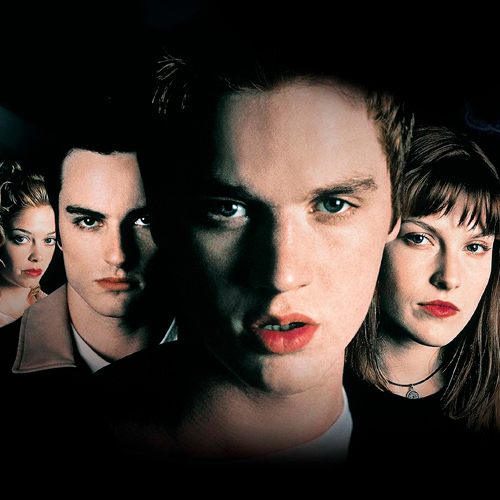

Since its cinematic debut in 2000, the “Final Destination” franchise has captivated audiences worldwide with its intriguing plot and shocking twists. Blending elements of suspense, horror, and a unique dose of fatalism, each film in the series explores the grim premise that death has a plan, and no one can escape their destiny.
Created by Jeffrey Reddick and developed by various directors over the years, the “Final Destination” saga is renowned for its elaborate death sequences, where characters are confronted by supernatural events and unseen forces relentlessly pursuing them. The narrative revolves around premonitions of imminent tragedies, in which a group of individuals desperately tries to avert their dark fate, only to discover that death is inexorable and unpredictable.
With a dedicated cult following and a unique ability to turn the everyday into a source of fear, “Final Destination” has established itself as an icon of modern horror, challenging expectations and leaving an indelible mark on the cinematic genre.
1 – INSPIRATIONS
We know that when a film is made, various inspirations and references are used. In “Final Destination,” it was no different, but there are some curious details surrounding the whole process. In fact, Jeffrey Reddick created the story when he was trying to kickstart his Hollywood career, initially thinking of submitting his script as an episode for the “X-Files” series. However, Reddick recognized the potential of the story even before submitting it for approval, and began seeking people interested in turning his idea into a movie.
Reddick told Bloody Disgusting that he was inspired when he heard about a young woman who was on a trip to Hawaii and received a call from her mother, asking her not to take the flight she was supposed to take because she had a bad feeling about it. She changed her flight, and the plane she was originally supposed to be on indeed crashed. The episode’s name would have been “Flight 180,” which is why the number 180 appears frequently throughout the film. Fearing the film would be mistaken for something like “Con-Air” or “Air Force One,” the title was changed.
Alongside Glen Morgan and James Wong, who also directed the first film in the franchise, Reddick expanded the script to turn it from a series episode into a full-fledged movie. For the second film, “Final Destination 2” (2003, dir. David R. Ellis), Reddick again drew inspiration from his daily life. One day, while driving on a highway, he found himself near trucks carrying lumber. This sparked thoughts of various accidents and how he could expand the film series’ mythology. New Line was interested in a sequel, and soon the second film began production.
2 – FILM AND SERIES REFERENCES
In addition to the incident mentioned by Reddick regarding the plane crash, the “Final Destination” franchise also incorporates influences from other works, such as the film “Sole Survivor” (1984, directed by Thom Eberhardt) and the episode “Twenty Two” from “The Twilight Zone” series. In “Sole Survivor,” a woman haunted by surviving a plane crash begins to be haunted by visions of deceased people who seek her out. Meanwhile, in “Twenty Two,” an actress in crisis begins to have premonitory dreams that come true.
“Final Destination 3” (2006, directed by James Wong) also echoes elements from “The Twilight Zone.” In the episode “A Most Unusual Camera,” a couple discovers a camera that reveals images from the near future, leading to unforeseen consequences. In the film, Wendy (portrayed by Mary Elizabeth Winstead) survives a roller coaster accident and uses photographs to anticipate the deaths of her friends.
Furthermore, the naming of characters in the franchise often pays homage to stars and directors of old horror films, such as Lon Chaney, George Waggner, Tod Browning, F.W.
Murnau, Max Schreck, Carl Theodor Dreyer, Don Siegel, Alfred Hitchcock, and Val Lewton, highlighting the ongoing influence of these figures in the horror genre throughout the films.
3 – THE DEATHS
Although the deaths depicted in “Final Destination” may seem overly eccentric to be real, there is a misconception in this assumption. While the parts about premonitions and death escapes are fictionalized, the incidents that trigger each film have their roots in reality, either having actually occurred at some point or being plausible scenarios post-film.
For example, in 2019, a man narrowly escaped death after colliding with fallen logs from a truck. In the United States, approximately four people die in roller coaster accidents each year, with the worst such accident occurring in 1972. The 1955 Le Mans Disaster resulted in the deaths of 80 people, while in 2007, the collapse of the 35W Bridge in Minneapolis, due to the weight of occupancy and construction operations, resulted in 13 deaths.
The deaths of the survivors in each film are inspired by some of the most intense death-related phobias people have, however unusual they may seem, such as being sucked into a pool drain. Surprisingly, these incidents have occurred in reality several times, demonstrating that while rare, such tragedies are not impossible.
4 – THE CHARACTER TONY TODD
Tony Todd, renowned for his roles in “Candyman” (1992) and the remake of “Night of the Living Dead” (1990), deserves special mention in the franchise’s trivia. He appeared in four of the films as Bludworth, the coroner who, despite limited screen time, captivated horror fans and became one of the series’ most iconic characters.
While many speculated that Bludworth could be the embodiment of Death itself on Earth, or at least its representative, Todd and the franchise producers do not share this interpretation. To them, the character is simply human, without supernatural connections to Death.
5 – BUDGET AND BOX OFFICE
The success of “Final Destination” dates back to the first film released in 2000. With a budget of 23 million dollars, it grossed 112 million dollars worldwide.
Throughout its films, the “Final Destination” franchise not only explored the boundaries of psychological horror and suspense but also created a lasting legacy in the horror cinema. With its unique formula of grim premonitions and elaborate death sequences, the series has captivated a dedicated fan base that continues to debate theories and hidden details behind each sinister plot.
Beyond intricate plots and impressive visual effects, “Final Destination” challenges the traditional concept of survival in horror films, where the inevitability of death manifests in unexpected and unsettling ways.
Each chapter of the saga adds a layer to the mystery of life after death and inevitable fate, keeping the audience in suspense until the very end.
Thus, while the films continue to send shivers down viewers’ spines, the “Final Destination” franchise also stands out as an example of how horror can transcend entertainment, prompting reflections on the unknown and uncontrollable aspects that reside within each of us.








